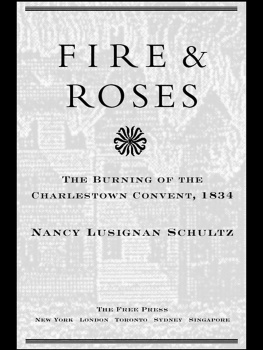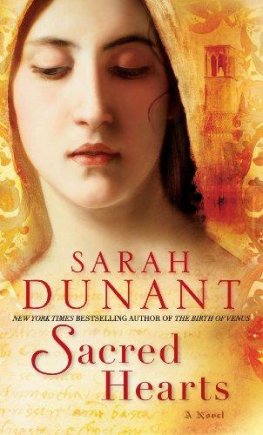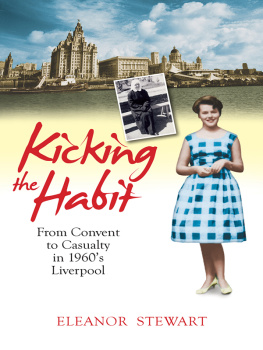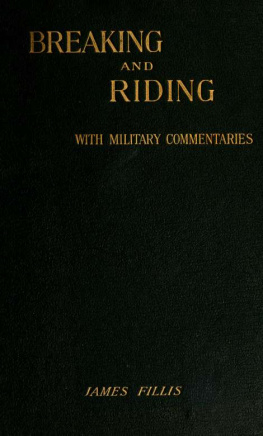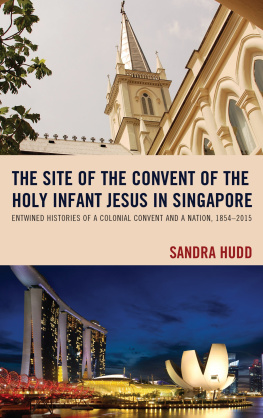Nancy Lusignan Schultz - Fire & Roses: The Burning of the Charlestown Convent, 1834
Here you can read online Nancy Lusignan Schultz - Fire & Roses: The Burning of the Charlestown Convent, 1834 full text of the book (entire story) in english for free. Download pdf and epub, get meaning, cover and reviews about this ebook. year: 2000, publisher: Free Press, genre: Detective and thriller. Description of the work, (preface) as well as reviews are available. Best literature library LitArk.com created for fans of good reading and offers a wide selection of genres:
Romance novel
Science fiction
Adventure
Detective
Science
History
Home and family
Prose
Art
Politics
Computer
Non-fiction
Religion
Business
Children
Humor
Choose a favorite category and find really read worthwhile books. Enjoy immersion in the world of imagination, feel the emotions of the characters or learn something new for yourself, make an fascinating discovery.
- Book:Fire & Roses: The Burning of the Charlestown Convent, 1834
- Author:
- Publisher:Free Press
- Genre:
- Year:2000
- Rating:5 / 5
- Favourites:Add to favourites
- Your mark:
Fire & Roses: The Burning of the Charlestown Convent, 1834: summary, description and annotation
We offer to read an annotation, description, summary or preface (depends on what the author of the book "Fire & Roses: The Burning of the Charlestown Convent, 1834" wrote himself). If you haven't found the necessary information about the book — write in the comments, we will try to find it.
In the midst of a deadly heat wave during the summer of 1834, a woman clawed her way over the wall of a Roman Catholic convent near Boston, Massachusetts and escaped to the home of a neighbor, pleading for protection. When the bishop, Benedict Fenwick, persuaded her to return, rumors began swirling through the Yankee community and in the press that she was being held at the convent against her will, and had even been murdered. The imagined fate of the Mysterious Lady, as she became popularly known, ultimately led to the destruction of the Ursuline convent in Charlestown, Massachusetts on the night of August 11, 1834 by a mob of Protestant men.
After battering down the front door, the men destroyed icons, smashed pianos, hurled the bishops library into a bonfire, ransacked the possessions of both sisters and students, and finally burned the imposing building to the ground. Not satisfied with this orgy of vandalism, they returned the following night and tore the lovely gardens up by the roots. The ruins sat on Mount Benedict, a hill overlooking Boston Harbor, for the next fifty years. The arsonists ringleader, a brawny bricklayer named John Buzzell, became a folk hero. The nuns scattered, and their proud and feisty mother superior, Mary Anne Moffatt, who battled the working-class rioters and Church authorities, faded mysteriously into history.
Nancy Schultz brings alive this forgotten moment in the American story, shedding light on one of the darkest incidents of religious persecution to be recorded in the New World. The result of painstaking archival research, Fire & Roses offers a rare lens on a time when independent, educated women were feared as much as immigrants and Catholics, and anti-Papist diatribes were the stuff of bestsellers and standing-room-only lectures. Schultz examines the imagined secrets that led to the riot and uncovers the real secrets in a cloistered community whose life was completely hidden from the world. She provides a glimpse into nineteenth-century Boston and into an elite boarding school for young women, mostly the daughters of wealthy Protestants, vividly dissecting the periods roiling tensions over class, gender, religion, ethnicity, and education. Although the roots of these conflicts were in the Puritan migration to America, it was ultimately the mobs perverse fantasies about cloistered women in an independent community that erupted in a combustible night of violence.
By unearthing the buried truth and bringing alive these fascinating characters, Nancy Schultz tells a gripping story of prejudice and pride, courage and cowardice in early nineteenth-century America that not only restores a clouded chapter in the countrys history but also has a poignant resonance for our own times.
Nancy Lusignan Schultz: author's other books
Who wrote Fire & Roses: The Burning of the Charlestown Convent, 1834? Find out the surname, the name of the author of the book and a list of all author's works by series.

